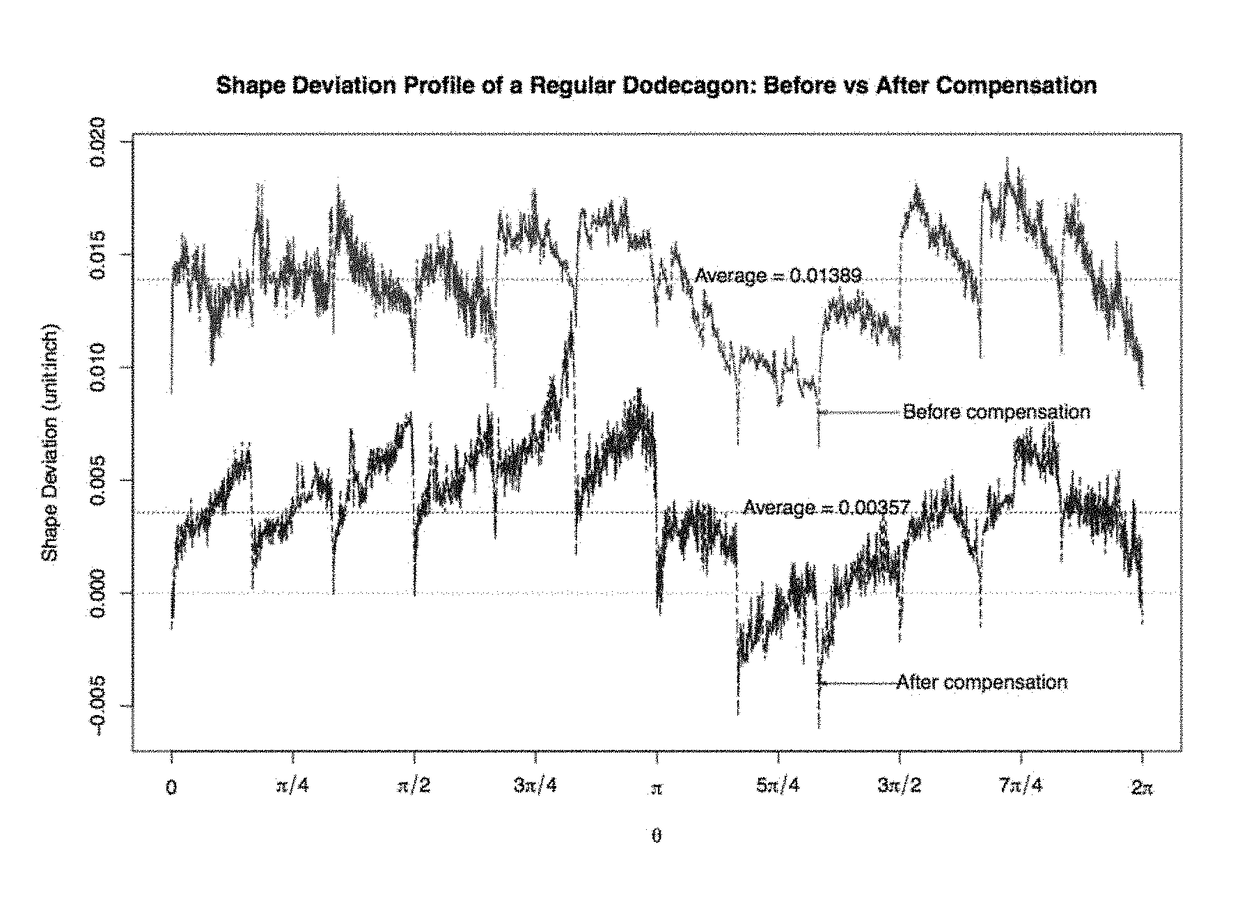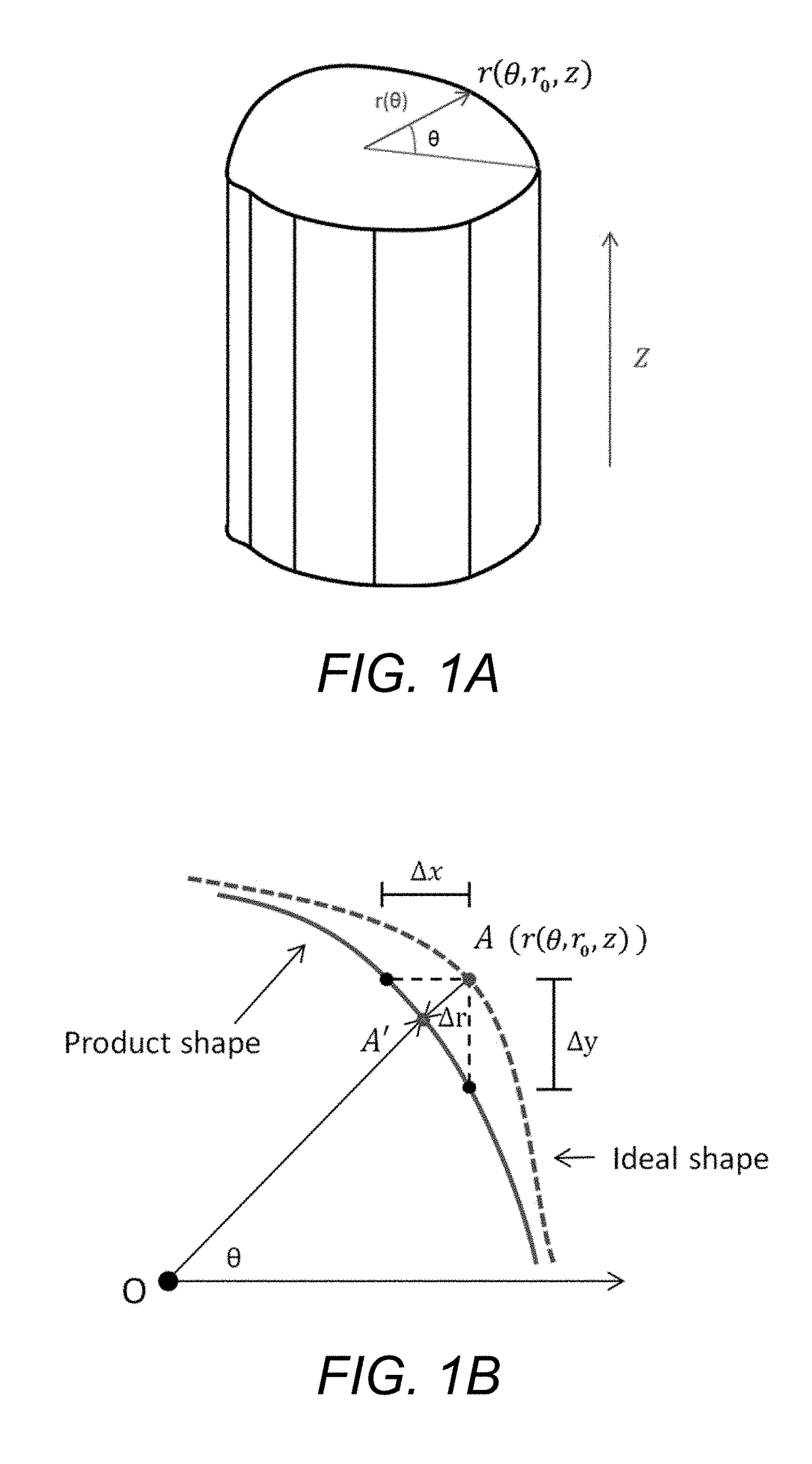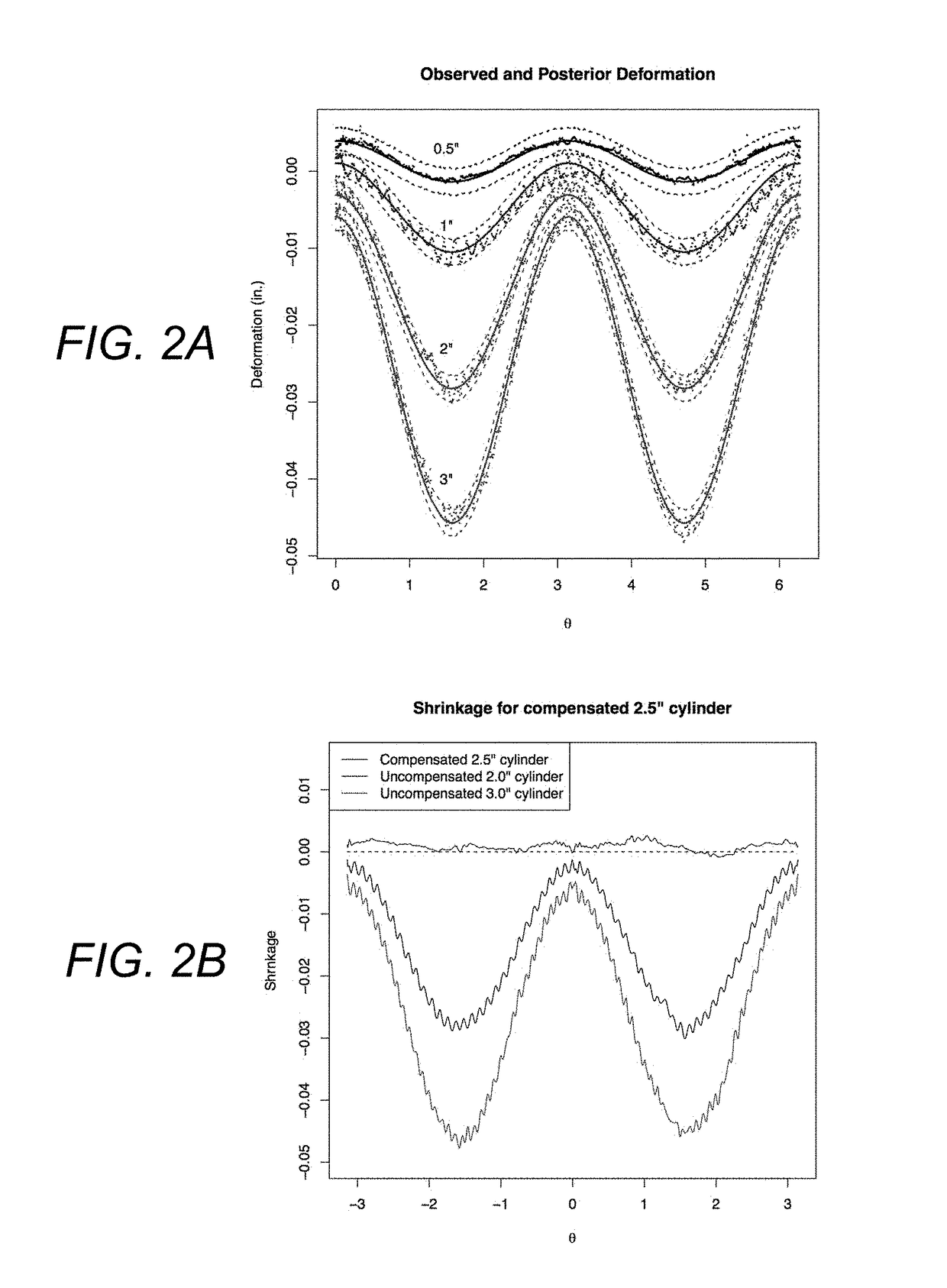Statistical predictive modeling and compensation of geometric deviations of 3D printed products
a technology of geometric deviation and predictive modeling, applied in the field of 3d printing, can solve the problems of not showing how the established method can be extended to non-cylindrical products, and the control of dimensional accuracy remains a major bottleneck in the application of 3d
- Summary
- Abstract
- Description
- Claims
- Application Information
AI Technical Summary
Benefits of technology
Problems solved by technology
Method used
Image
Examples
Embodiment Construction
[0041]Illustrative embodiments are now described. Other embodiments may be used in addition or instead. Details that may be apparent or unnecessary may be omitted to save space or for a more effective presentation. Some embodiments may be practiced with additional components or steps and / or without all of the components or steps that are described.
[0042]Discussed below is are approaches that improve accuracy in additive manufacturing (AM) by changing the CAD design to optimally compensate for anticipated product deviations. To accomplish this goal, a predictive model forecasts the quality of a wide class of product shapes, particularly considering the vast library of AM built products with complex geometry. The approach uses statistical predictive modeling and compensation to predict and improve the quality of both cylindrical and prismatic parts. Experimental investigation and validation of polyhegron indicates the ability to predicte and compensate a wide class of products built t...
PUM
| Property | Measurement | Unit |
|---|---|---|
| sizes | aaaaa | aaaaa |
| shape | aaaaa | aaaaa |
| Shrinkage | aaaaa | aaaaa |
Abstract
Description
Claims
Application Information
 Login to View More
Login to View More - R&D
- Intellectual Property
- Life Sciences
- Materials
- Tech Scout
- Unparalleled Data Quality
- Higher Quality Content
- 60% Fewer Hallucinations
Browse by: Latest US Patents, China's latest patents, Technical Efficacy Thesaurus, Application Domain, Technology Topic, Popular Technical Reports.
© 2025 PatSnap. All rights reserved.Legal|Privacy policy|Modern Slavery Act Transparency Statement|Sitemap|About US| Contact US: help@patsnap.com



